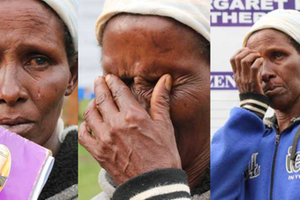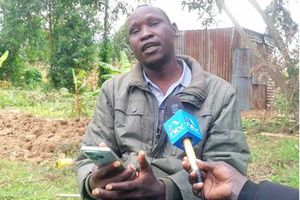
The Social Health Authority building, Nairobi in this picture taken on October 6, 2024.
Falling sick in this part of the world is a communal affair. Fundraisings that involve patients tend to attract the greatest sympathy and support from the society.
A good social medical scheme does not only matter to a specific patient, it is also to the well-off as it saves them money they could have contributed for sick relatives and friends.
A typical medical fundraiser attracts an average of 200 participants. Therefore, a person with a good medical insurance cover helps these 200 individuals to save their money and use it elsewhere.
Some county governments established medical insurance schemes that target the poor. Such schemes entail counties paying a public medical insurer a negotiated sum to provide free medical cover for indigents for certain benefits package. Previously the public medical insurer was the now defunct National Hospital Insurance Fund (NHIF).
Part of these funds find their way back to the county coffers in two ways. First, as capitation. This means money sent by NHIF to counties medical facilities to cover outpatient services for those NHIF members who had opted those facilities to be outpatient facilities of choice. This is usually a standard fixed amount (Sh1,200 per annum per each patient registered in a Level 4 medical facility). Second, county medical facility would lodge claims for inpatient clients and amounts varied depending on the nature of the medical intervention done by a facility.
Sh100 million premiums
Therefore, if a county paid Sh100 million premiums to provide medical cover for its poor to NHIF in a year, for example, it could receive from NHIF Sh60 million either as capitation or inpatient claims payment and hence the net payment be Sh40 million.
Of course there are problems of delays in refunds and, therefore, this used to be "money on paper ". It is hoped SHA will remedy the problem of late refunds and capitation.
Currently those arrangements have been transitioned to Social Health Authority (SHA). SHA has been in practical existence since October 1, 2024 and counties have identified areas that can be retweaked to improve SHA reforms.
The most important area requiring a rethink by Parliament is proxy means testing. This is a mandatory tool that SHA has deployed to estimate a contributor income and thus arrive at one's premium or amounts payable to SHA. It is targeting those in the informal sector.
In 2022, total Kenyans in employment were 19 million. Only 3 million were in the formal sector. Sixteen million were in the informal sector. Therefore, SHA reforms will succeed or fail depending on how the informal sector embraces these reforms. For the last five years, the informal sector has been on an upward trajectory while the formal sector has plateaued out.
Whereas formal sector contributions to public medical insurance is mandatory and automatic, informal sector medical insurance contributions tend to be adverse. That means the contributions only come when informal sector employees project a medical situation (like pregnancy) and stops immediately thereafter. On average, NHIF used to get 90 per cent of it's money from the formal sector, notwithstanding it's small size compared with the informal sector. That suggests the informal sector is very squeezed monetarily to the extent it does not prioritise medical insurance payments.
Therefore, mean testing under SHA should make premiums lower (not more expensive), otherwise informal sector will abandon SHA.
Informal sector
A good mean testing would net the rich in the informal sector who might be underpaying. A mean testing wrongly calibrated might make SHA expensive to the common person.
Proxy means testing under SHA is based on household composition, housing quality, education level, asset ownership and employment- amongst other indicators. But there seems to be some risks of exclusion errors where some genuinely poor people might be classified as rich. Poverty is never static. It fluctuates, for example, in instances of job losses. Proxy means testing under SHA is being subjected to both spouses in a marriage hence possibly occasioning double payments within a household.
Probably data should be analysed and published so the public gets to know the average premium being paid by Kenyans in the informal sector under SHA once mean tested.
This information will matter both to the patients and counties that have schemes for their citizenry. The public will know if indeed SHA is cheaper or more expensive than the NHIF monthly cover of Sh500 on average. SHA had promised monthly premium of Sh300 for the common person. But has this been achieved? Mean testing would tell us.
It matters to the counties in terms of budgeting for their medical scheme for the public. Counties had provided for specific sums in 2023/ 2024 for these programs. Now with means testing, counties may be interested in knowing if their budgets should be revised upwards or downwards for this specific item.
Dr Kang’ata is the Governor of Murang’a County; Email [email protected]







